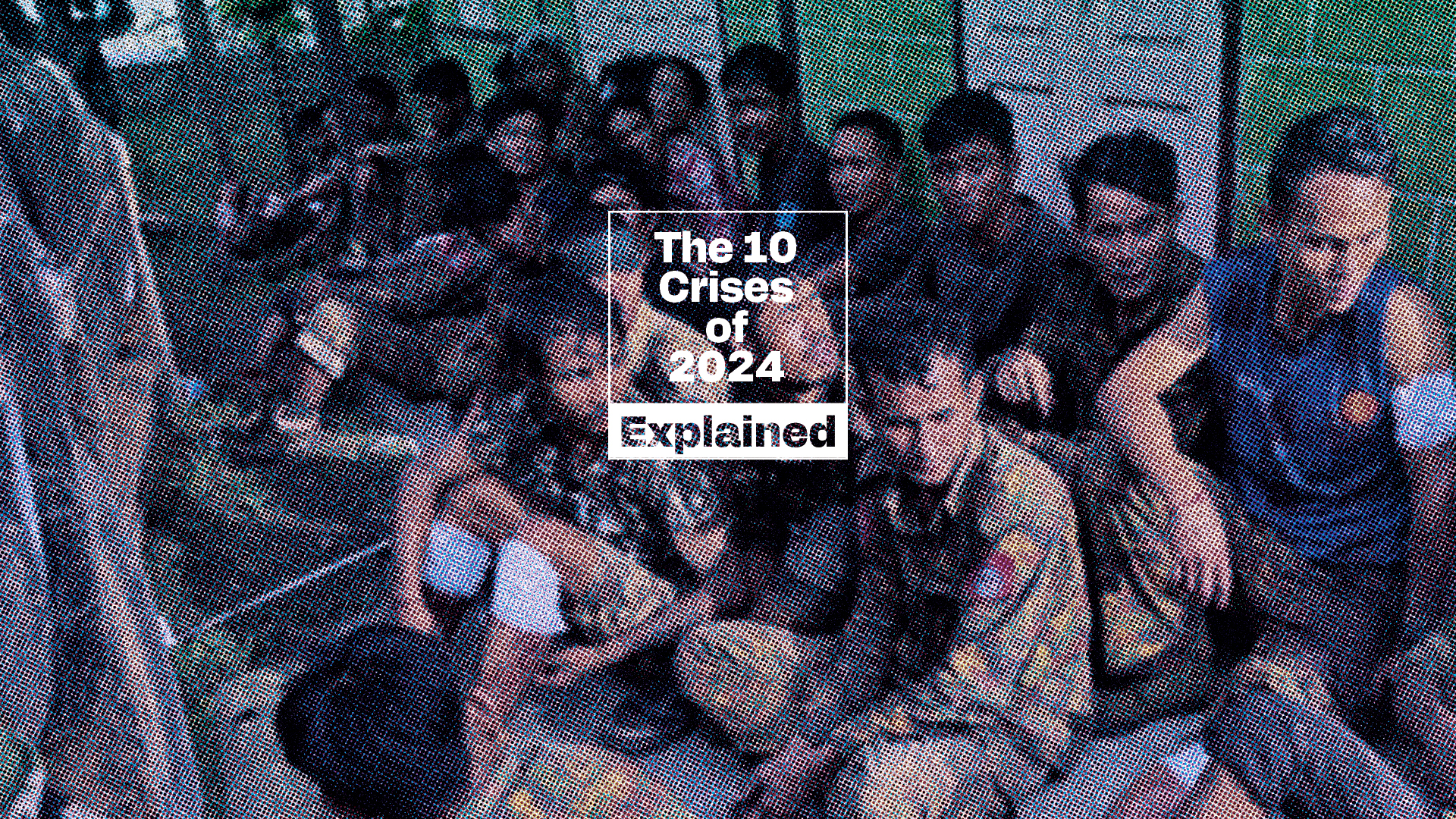With global attention fixated on the wars in Gaza and Ukraine, conflicts like the one unfolding in Myanmar often slip “under the radar” of international news coverage. In the fourth installment of the “10 crises of 2024” series, iMEdD sheds light on Myanmar’s civil war—a conflict that has raged for three years, is considered as the most violent one in the world and has pushed Myanmar to the top of the world’s crime rate index.
3. Sudan – One Year On: “The Forgotten Crisis”

The 10 crises of 2024 – Explained: 3. Sudan – One Year On: “The Forgotten Crisis”
Where is Myanmar?
Myanmar is located in Southeast Asia and serves as a “bridge” between India and China. Apart from these two countries, it shares borders with Bangladesh, Laos, and Thailand. With a population of approximately 55 million, 69% are of the Burmese ethnicity. Other ethnic groups such as the Shan, Karen, Rakhine, and various others constitute smaller proportions of the population. In total, it is estimated that Myanmar is home to at least 135 different ethnic groups.
What’s the country’s history?
In 1948, Myanmar achieved its independence from Britain. Following this, in 1962, a military coup took place, initiating a continuous quest for democratic governance in the country. In 1988, Aung San Suu Kyi founded the National League for Democracy (NLD) and was subsequently awarded the Nobel Peace Prize in 1991. In response to democratic protests and international pressure, the military regime held elections in 1990, which were won by the NLD. However, the military refused to recognise the results and placed Aung San Suu Kyi under house arrest.
In 2007, a fresh wave of democratic protests led to a constitutional referendum and elections in 2010, won by an ultranationalist pro-military party, but boycotted by the NLD. The NLD finally secured victory in the 2015 elections, forming a civilian government, yet the military maintained key centres of power.
In the period 2016-2017, a wave of violence that targeted the Muslim minority Rohingya resulted in the displacement of over 730,000 people and was labelled as genocide by the US and European states. Despite this, Aung San Suu Kyi rejected claims of genocide against the Rohingya in statements she made. In 2020, the NLD secured electoral victory once more, amidst military allegations of fraud, leading to the eventual seizure of power in a coup on February 1, 2021, which ignited the ongoing conflict that has afflicted the country to this day.
How did the conflict begin?
When the army seized power in 2021, it imprisoned all of the country’s political figures, including Aung San Suu Kyi, who was once again placed under house arrest. The initially peaceful anti-junta protests quickly escalated into armed clashes and prompted the creation of militias when the regime decided to violently repress them. Those who managed to escape formed the National Unity Government and its armed groups, known as the People’s Defense Forces (PDF), established on May 5, 2021, comprising hundreds of small militias.
Who is fighting in Myanmar?
On one side stands the Myanmar army, backed by some militias and armed non-state factions. Opposing them are the anti-regime militias that arose after the 2021 coup – with the PDF having emerged as the main one – which have allied themselves with pre-existing armed ethnic groups that have long fought against the central government and controlled small areas of the country. Reports suggest that China and Russia are supplying Myanmar’s military with arms and heavy military equipment, while the US lends support to resistance factions officially through non-military means.
What is the current situation?
Since last October, the anti-regime forces have initiated a series of attacks codenamed “Operation 1027”, resulting in the capture of key cities and military bases, thereby gaining control of more than half of the country. Conversely, the regime appears to maintain control over the central region of the country. Expert analysts’ reports suggest that these attacks over the past six months could mark a pivotal moment in the conflict.
OCHA’s April 2024 update on the humanitarian crisis in Myanmar described the country as being “amid a deepening humanitarian crisis”, with 2.5 million people displaced by the conflict since February 2021 and over 50,000 fatalities, including at least 8,000 civilians.
According to the United Nations Office on Drugs and Crime, Myanmar surpassed Afghanistan in 2023 to become the world’s leading producer of opium. The Bureau’s report elucidates that the ongoing conflict has driven farmers to transition to the illicit economy. Apart from drugs, the country is purportedly a hub for cybercrime, money laundering, and human trafficking.
Reports indicate that 2024 is poised to mark a significant juncture in this Southeast Asian civil war. Despite recent victories by rebel forces, the UN Special Rapporteur on Human Rights in Myanmar, Tom Andrews, recently cautioned that “While wounded and increasingly desperate, the Myanmar military junta remains extremely dangerous.”
Read all the Explainer texts of the series “The 10 Crises of 2024” here.
